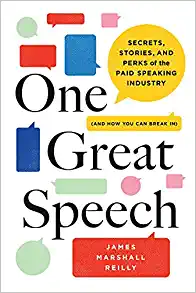Listicles Make Life Simple for Blog Content Writers and Blog Readers

The AAA Crossroads Magazine knows a good listicle when they see one. In “How to Make Travel Count”, TV host Samantha Brown lists five tips plus one “bonus tip” for getting the most out of even the shortest travel experience.
- Tip #1: Take a walk.
- Tip #2: Explore the side streets.
- Tip #3: Create a ritual.
- Tip #4 Talk to people.
- Tip #5: Identify the emotional value.
- Bonus tip: Put the map away, put down the phone, and just go down street because you think they look good.
Each one of these titles heads up a paragraph explaining how to use that tip. Not only does that visually organize the page in an attractive way, it makes the information easy to digest.
Still, in the online world, Caroline Forsey writes in hubspot.com, the list post (otherwise known as a listicle) commonly gets a bad name. In fact, she admits, “you can easily drown in a sea of particularly low-quality low-value listicles”. Nevertheless, Forsey explains, readers love listicles – for a number of reasons:
- They are easy to scan.
- They outline specifically what the reader will learn in the post.
- Complex content is broker into bite-sized pieces.
- Readers can skip to sections most applicable t them.
Listicles feed into our brain’s drive to categorize information and give us a sense of satisfaction when we correctly predict patterns, Neil Patel points out, citing a study out of Ohio State University showing how humans try to detect patterns in their environment.
To avoid adding to the “bad name” side of listicles, Toman of checkflow.io advises, don’t add more points just to fill up your list. Add interesting details to each item (Samantha Brown’s article is the perfect example). In order to make your angle unique, read what the competition is saying on the subject, then write from a personal perspective. “Going for a walk is the very first thing that I do at any destination,” Samantha writes.
I noticed that, even though it’s a listicle, Samantha Brown writes in first and second person, using the pronouns “I” and “we” and “you” throughout her piece. “I know what you’re thinking – Enjoy the mundane?” “I feel that talking to people is something that has been slowly going missing from our daily lives.” In blog marketing, I stress first person writing because of its one enormous advantage – it shows the people behind the posts, revealing the personality of the person or the team standing ready to serve customers.
At Say It For You, our content writers are always seeking to vary the ways we present information on a single topic in many different ways. Not only are we on the lookout for different “templates” in terms of platform graphics, but different formats for presenting information about any business or professional practice.
Listicles, when done well, make life simpler for both blog content writers and their readers.





Follow us online!